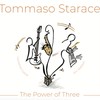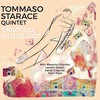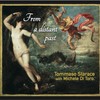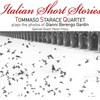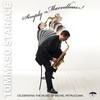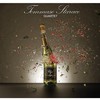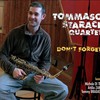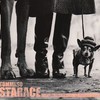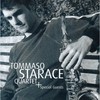The Oxford Times
Oct. 2009 By Paul Medley (The Oxford Times)
The audience at the Spin were jogged into attention as soon as the Tommaso Starace Quintet opened their first set. The compelling mix of upbeat funk grounded by Laurence Cottle on electric bass and John Nichols on drums underpinning John Turville on keys, Roger Beaujolais on vibes and the almost impossibly fast Starace on alto would have raised a stir from a hung-over rat.
Anyone who has experienced a glissando of language on the streets of Italy will understand the utter exuberance with which Italian-born Starace attacks and runs with the language of music. There are times when the notes come pouring out so fast they seem to be tumbling over each other and Starace is forced to pause for mental breath. The choice of Cottle with his ability to hold down a complex, perfectly articulated bass line makes the whole band sound as if it is performing on a springboard that’s being jogged and twitched by the clatter and crack from John Nichols’s percussion.
Beaujolais played vibes with characteristic flight and attack while, amid all this, John Turville’s solos provided small oases of melodic calm before he too would join in the dance. On the other hand, Starace, and also Beaujolais, can inject the same passion into a ballad such as the beautiful arrangement of the music from Cinema Paradiso on soprano where he gave touch and density to longer slower phrases.
In the second half, Starace performed part of his latest album, Tommaso Starace plays the pictures of Elliot Erwitt, in which the music is inspired by particular images by the famous Magnum photographer. This involved projecting the relevant image on to a screen on stage, something that can be a distraction or even an irrelevance. In this case the music was appropriate, idiosyncratic and humorous and having the photograph as a reference forged an understanding of the intention. The evening ended with another ripping funk piece based on an image of a black American soldier with his tongue out at the lens. The irony of the image was not entirely lost in the wit within the music.
"

